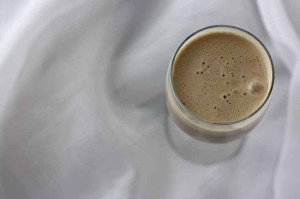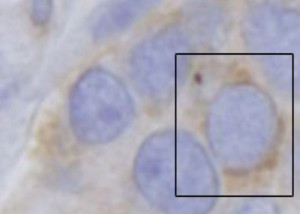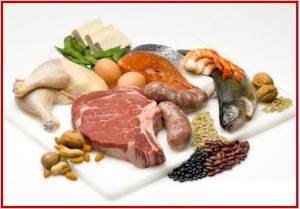How Do We Make Proteins
Proteins are large complex molecules made up of a chain of amino acids. Every cell in our body needs protein to stay alive as it is necessary for tissue repair and replacing dead cells.
They have many other functions as well as aiding cell repair and production including forming antibodies to help fight off disease, forming enzymes which speed up or trigger chemical reactions and co-ordinating processes within the body (via hormone regulation, for instance). Proteins also provide support for cells and form structural elements of the body, such as nails and teeth, as well as facilitating the transportation of some small molecules around various systems.
We build proteins using information encoded in our genetic code. DNA code utilizes groups of three letters (a mix of A, G, C and T) and these short sequences, which are known as triplets or codons, then code mRNA templates; these templates are ‘translated’ by cell ribosomes into amino acids.
Each protein is made up of hundreds of thousands of amino acids, which are in long chains. There are 20 different types of amino acid that can be combined to build a protein and it is the sequence of amino acids that determines each protein’s unique three-dimensional structure and its function.
 However, not all amino acids can be made by the body. The ones that need to be consumed via our diet are called essential amino acids. If possible, the body will also conserve energy by using amino acids from food rather than producing them itself. Protein deficiency can cause diseases such as kwashiorkor, a form of malnutrition common in poverty-stricken areas.
However, not all amino acids can be made by the body. The ones that need to be consumed via our diet are called essential amino acids. If possible, the body will also conserve energy by using amino acids from food rather than producing them itself. Protein deficiency can cause diseases such as kwashiorkor, a form of malnutrition common in poverty-stricken areas.
Why are amino acids important?
Amino acids are vital to our bodies being able to operate as they are the building blocks of proteins. Each type of amino acid performs a different Job, which aids protein activity in the body and determines the protein’s primary function(s). Without these proteins would not be able to help the body with movement, defence against disease, processing food or co-ordinating general growth and development.
There are nine essential amino acids for humans that must be absorbed from external protein sources (eg meat/ fish) as they cannot be synthesized by the body. Without the required amount of amino acids, the body can really suffer.
![Amino acids protein]() Protein production
Protein production
Protein is generated in the nucleus of a cell using genetic coding information held within our DNA. To produce protein, DNA unravels to allow messenger RNA (or mRNA) to copy it and form a template. This template is translated by ribosomes into amino acids, which then line up to form a protein. Parts of DNA code will serve as punctuation, telling the ribosome when to start and stop, and some parts will instruct the cell how frequently it must produce the specific protein.
 1. Cell – The body is made up of millions of cells, none of which could survive without protein, for repair and replacement.
1. Cell – The body is made up of millions of cells, none of which could survive without protein, for repair and replacement.
2. Nucleus – This is the control centre of the cell where all important genetic data is stored.
3. Chromosome – Most human cells have a set of 46 chromosomes and these contain our genetic information which, among other things, instructs the cell which protein to make and also how.
4. Nucleosomes – These are balls formed of DMA strands and histones (spool-like proteins) which sit inside chromosomes.
5. DNA – DNA (deoxyribonucleic acid) holds the information necessary for amino acid – and ultimately protein -production in the letter sequence in its structure.
6. mRNA – This type of genetic acid forms a template based on DNA sequences, which is then used to produce amino acids by the ribosome.
7. Ribosome – This is the ‘protein-making machine’ in the ceil. It uses mRNA templates to synthesise the specific protein needed.
8. Amino acid – These small molecules combine in specific string sequences to generate the different types of protein.
9. Protein – Proteins are made up of long chains of amino acids. Each protein has a specific function which suits its role and is crucial to our bodies being able to operate effectively.

